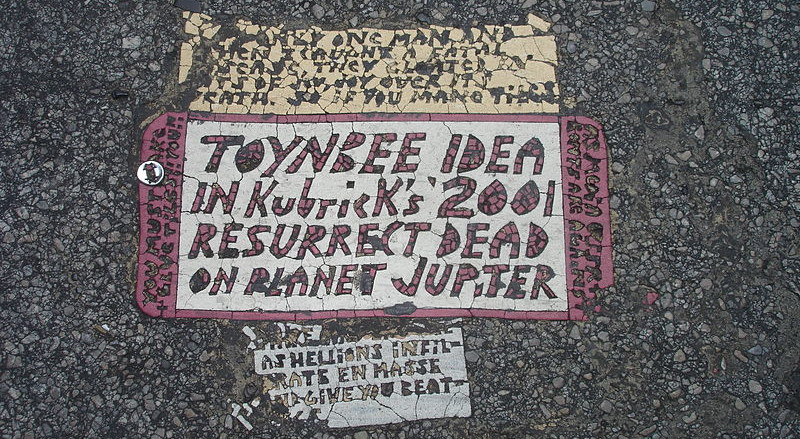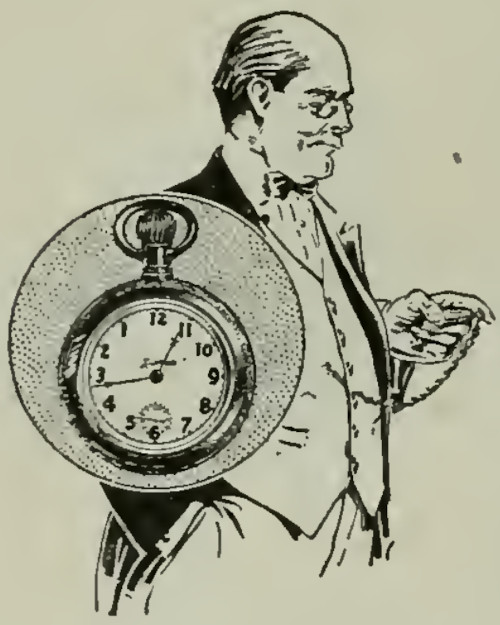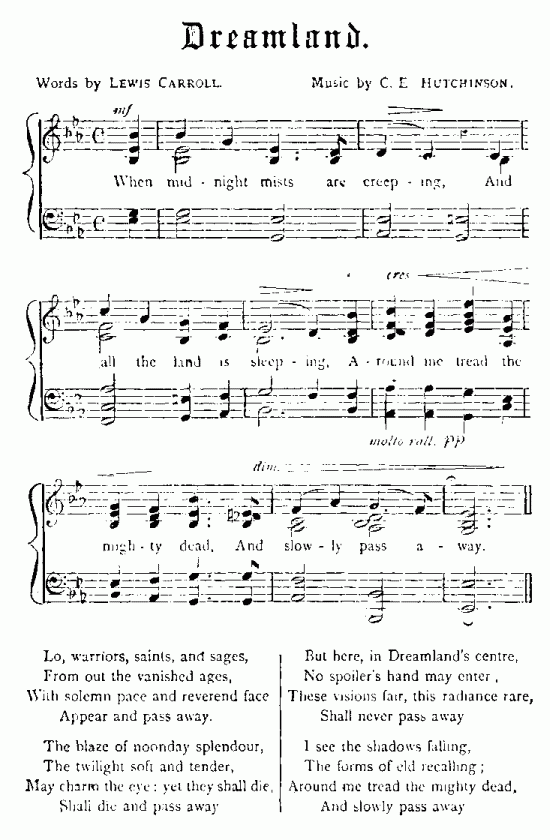
What is this? No one quite knows. Plaques such as this have been found embedded in the streets of 24 major American cities since the late 1980s. Typically they read:
TOYNBEE IDEA
IN MOViE `2001
RESURRECT DEAD
ON PLANET JUPITER
But what that means, and who’s been placing them, are unknown. TOYNBEE may be British historian Arnold J. Toynbee, and MOViE `2001 is likely Stanley Kubrick’s 1968 film. What do these have in common? One possibility is Ray Bradbury’s 1984 short story “The Toynbee Convector,” which appeals to Toynbee’s idea that humans must adopt ambitious goals in order to advance even slightly (colonizing Jupiter might be such a goal). But that’s just a guess, and even if it’s right it’s not clear how someone thought that impressing it in asphalt would advance this cause. Maybe some sort of Phase 2 is coming.





